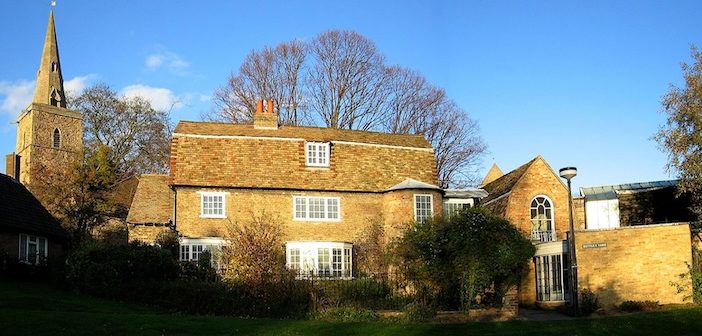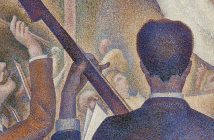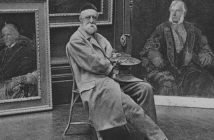What if Cambridge’s most enduring legacy is not its Nobel laureates, nor the centuries of intellectual pursuit etched into its identity, but a lemon on a table in a half-lit room? In a city which exalts the measurable, the publishable, the patentable, Kettle’s Yard persists as a sanctuary in which the ordinary is not merely preserved, but transfigured, and in which looking matters more than knowing. Douglas Blyde investigages…
Have you ever truly dwelt with art, rather than simply observed it? Here, you are not merely permitted but subtly encouraged to sit – on a low chair or window seat, each positioned as if by a benevolent, unseen hand. Paintings sometimes hang just above the skirting boards, their forms and colours making more profound sense from such a vantage, as if the house itself is subtly schooling you in a new way of seeing. You are invited to let your gaze settle from the pale gleam of a pebble on a windowsill to the lemon which brightens a shadowed corner, its skin radiant against the stillness. As you move through the house, steps are carpeted with oriental rugs, softening your footsteps, adding to the sense of welcome.
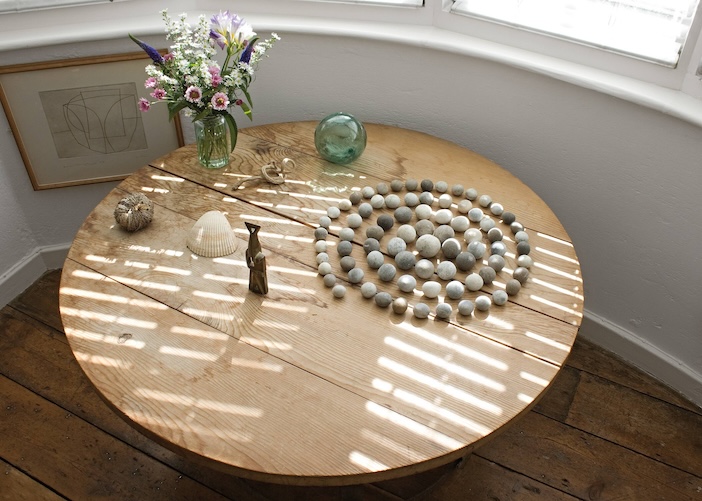
Photo: Paul Allitt (courtesy of Kettle’s Yard)
Natural light is cherished above all: windows are left uncurtained to let the shifting daylight animate the rooms, and the arrangement of objects is designed to catch and reflect the sun’s movement through the day. Electric lighting is discreet, so that the true drama comes from sunlight dancing across whitewashed walls, wood, and glass. Some light switches are transparent, revealing the coloured wires within. This small detail is a nod to the way colour is woven through each room – an echo of the palette in the art and objects around it, and a reminder that even the most functional elements can participate in the house’s ongoing conversation about luminosity, colour, and attention.
The approach is abrupt: one moment you are in the churn of Cambridge, dodging bicycles, overhearing the patter of open-top bus guides, one hand raised with a Fitzbillies’ latte, the other clutching your nagging phone, as punts collide at Magdalene Bridge. The next, you are at the door, where you must pull the bell rope to gain entry – its fibres worn soft by decades of anticipation.
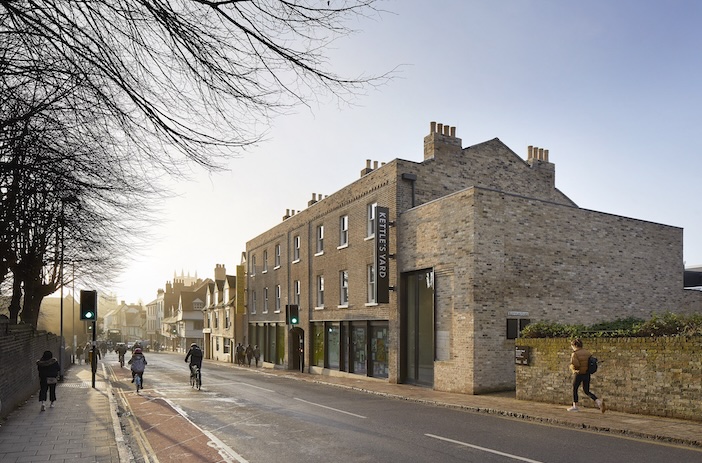
Photo: Paul Allitt (courtesy of Kettle’s Yard)
The first impression is as much olfactory as visual: a mingling of beeswax and chalk, the faint musk of old paper, a trace of oil paint lingering in corners, and, from the garden, the green, mineral tang of damp stone and clipped box. In winter, there is the ghost of coal smoke, and always, the undercurrent of something living and carefully tended. The air is storied, as if the house itself lives in time with its visitors.
All Time Alive
Kettle’s Yard is a rescue – four Victorian cottages, once condemned, now conjoined into a single, idiosyncratic whole by Jim and Helen Ede, with the architectural assistance of Rowland de Winton Aldridge. The floors slope, the ceilings lean, and the walls exhale memory. There is no prescribed path; the visitor is trusted to wander, to pause, to look. Jim Ede, once Assistant Keeper at the Tate, left not in protest, but in slow disillusionment, unable to reconcile his devotion to the modern with the museum’s preoccupation with acquisition, categorisation, and the grand narrative of art history. Here, he created a home for art and for living – a place in which the distinction between the two dissolves.
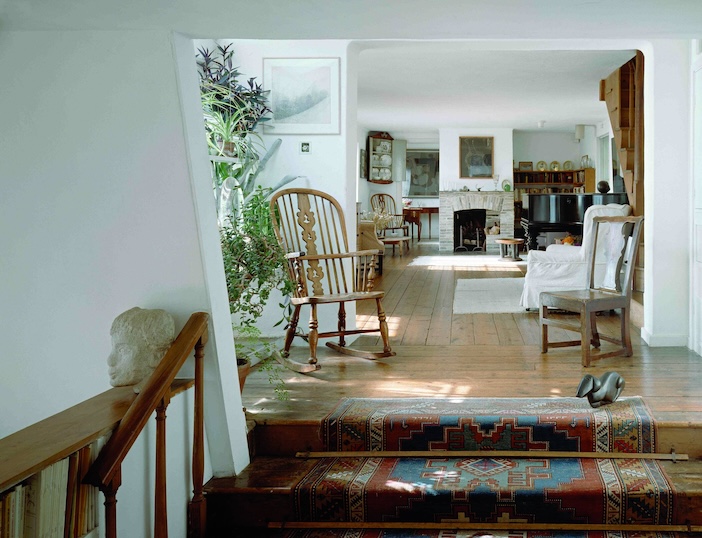
Photo: Paul Allitt (courtesy of Kettle’s Yard)
Helen Ede’s presence is everywhere, though she preferred the background. On her bedroom window, droplets of paint linger – a small, private weather. In the skirting board, a discreet aperture allowed her to call to Jim below – not often, but sometimes, for tea, when the noise of guests proved too much. Her influence is felt in the restraint, the order, the care with which every room is arranged. The house is as much a testament to her sensibility as to his.
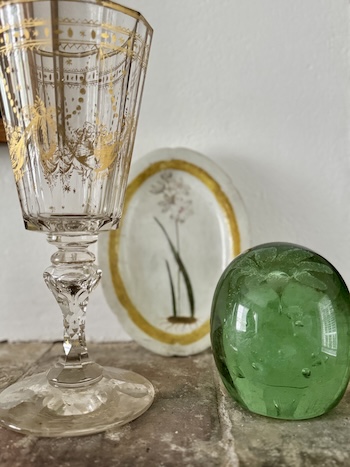 The dining table is the heart of this philosophy. A spiral of pebbles – chalk, quartz, river-rounded flint – is wound as a natural order, a galaxy mapped in stone. A spoon rests beside a drawing by Winifred Nicholson, the two objects in silent conversation. The cracked and carefully mended goblet was purchased by Jim Ede with the last of his father’s money after a missed train. Stranded in a French town, Ede chose to embrace serendipity rather than frustration, buying the already-flawed goblet as an act of faith in the overlooked. It became a symbol of endurance and mending, teaching that meaning is found not in perfection, but in our response to life’s small accidents.
The dining table is the heart of this philosophy. A spiral of pebbles – chalk, quartz, river-rounded flint – is wound as a natural order, a galaxy mapped in stone. A spoon rests beside a drawing by Winifred Nicholson, the two objects in silent conversation. The cracked and carefully mended goblet was purchased by Jim Ede with the last of his father’s money after a missed train. Stranded in a French town, Ede chose to embrace serendipity rather than frustration, buying the already-flawed goblet as an act of faith in the overlooked. It became a symbol of endurance and mending, teaching that meaning is found not in perfection, but in our response to life’s small accidents.
The Poetry of Arrangement
In a darkened corner, a lemon atop a table is always replaced before it can dull. Its brightness brings light to the shadows, echoing a yellow dot in the Miró which hangs nearby. The Miró itself – looping and exuberant – is not set apart, but in dialogue with the fruit and the room. The effect is electric: a conversation between the ordinary and the extraordinary, which is the house’s gift. This is no passive loveliness. It is an invitation: notice the overlooked, celebrate the everyday, and let your attention become an act of transformation. The lemon is not mere fruit, but a challenge – will you see the world as it truly is, or as you expect it to be?
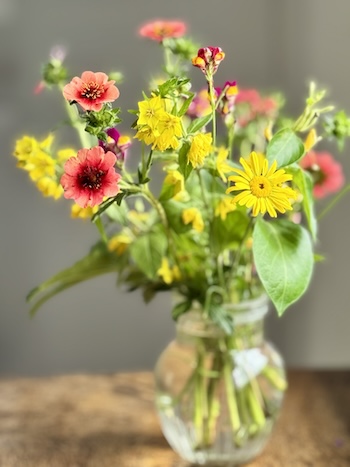 Wild flowers and garden cuttings abound, gathered as one might gather thoughts – spontaneous, local, alive. Cow parsley in a jug, a sprig of rosemary, violets or snowdrops depending on the season – these details are a tender assertion that the world outside is invited in, that nature and art are companions here, and that the wild is never far from the domestic. Ede himself wrote of the importance of ‘fresh flowers, always,’ and the house still honours this dictum.
Wild flowers and garden cuttings abound, gathered as one might gather thoughts – spontaneous, local, alive. Cow parsley in a jug, a sprig of rosemary, violets or snowdrops depending on the season – these details are a tender assertion that the world outside is invited in, that nature and art are companions here, and that the wild is never far from the domestic. Ede himself wrote of the importance of ‘fresh flowers, always,’ and the house still honours this dictum.
The art is everywhere, but never clamorous. A drawing by Brâncuși, the carved wooden horse by Gaudier-Brzeska, a Gaudier plaster cast marked by a wartime bullet hole – the wound left open, history not hidden. Works often arrived through friendship, especially through Ede’s long correspondence with Sophie Brzeska. What is a collection, if not a record of relationships, of trust, of affection exchanged for art? The house is a living anthology, each object and painting allowed to be itself, to belong.
Music is woven into the fabric – two grand pianos, one a surprise after the first, narrow staircase, the other seemingly smaller in the gallery extension. Their vibrations linger in the lime-washed walls. As are words. Books line the shelves – Blake, Rilke, Taoist texts, poetry and art theory, their spines softened by use, their margins annotated by Ede’s hand. Letters are tucked between pages. Visitors are welcome to read, to lose themselves, to become part of the house’s slow accumulation of meaning.

Photo: Paul Allitt (courtesy of Kettle’s Yard)
Step outside and St Peter’s church awaits – a small, ancient structure, its flint walls weathered by centuries of wind and rain. Each morning, Ede would sweep the church grounds himself. This daily ritual was more than simple tidiness; it was an attentive gesture towards the overlooked details of place and memory, honouring the history of the churchyard and all – human and animal – who passed through it. Inside, the font is guarded by four carved mermen, their faces softened by centuries of touch.
In the back garden, a single stone marks the grave of the Edes’ cat, ‘One’ – a modest but heartfelt memorial. By giving such care to the grounds and by marking the resting place of a beloved pet alongside centuries-old monuments, Ede affirmed that every life, however small, is worthy of remembrance and respect. His daily acts blurred the line between the celebrated and the ordinary, embodying his belief that art, nature, and life are inseparable.
Resisting Erasure
Kettle’s Yard nearly vanished. The cottages were marked for demolition in the 1950s – walls condemned, foundations scheduled for clearance – until Ede intervened, buying them for a nominal sum. Cambridge has not always been kind with its past. In the 1980s, the Kite quarter – a maze of Victorian streets and shops – was razed for the Grafton Centre. Along Mill Road and Petersfield, chapels and workshops vanished, replaced by the blank optimism of new façades.
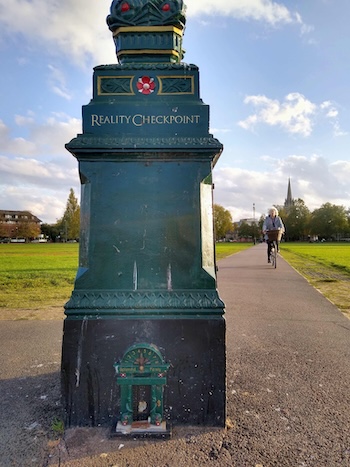
Photo courtesy of WikiCommons
To resist erasure is to stand against the easy loss of memory, to insist what is fragile or unfashionable still has value. Online, we are encouraged to present only the polished, the new, the appealing – while the awkward, the weathered, and the enduring are swept aside. Kettle’s Yard, by contrast, preserves the imperfect and the overlooked, refusing the lure of reinvention for the sake of fashion. Its survival is a daily assertion that history is made not only by grand gestures but by the steadfast tending of places and stories which might otherwise disappear. In an age obsessed with surface, Kettle’s Yard endures as a living reminder that the vulnerable and the unvarnished deserve to be seen, cherished, and remembered.
And when you leave? You step back into Cambridge, senses recalibrated, the world’s surfaces more alive. You find yourself at Parker’s Piece, at ‘Reality Checkpoint’ – the cast-iron lamp post rising from the grass, its shadow stretching long in the late light. For a moment, the city pauses. Will you pause with it? Will you notice the world differently? Does every pebble, every shaft of light, every bud in a jug now seem to wait for your attention? And somewhere in your mind, the lemon still sits in its half-lit corner – vivid, defiant, glowing.
If you allow it, Kettle’s Yard will remake your eyes, and send you back into the world not as you were, but as someone who has tasted, even fleetingly, the possibility of grace – the sense with which the ordinary, when attended to, becomes extraordinary. Will you let it change you, as you pass beneath the shadow of Reality Checkpoint, and step out into the world remade?
Let the world become your gallery.
Entry is by timed ticket (£14). Tickets may be booked in advance, or in person on a first come, first served basis. For more information, please visit www.kettlesyard.com.
Photos by the author, unless otherwise stated. Header image: WikiCommons.

